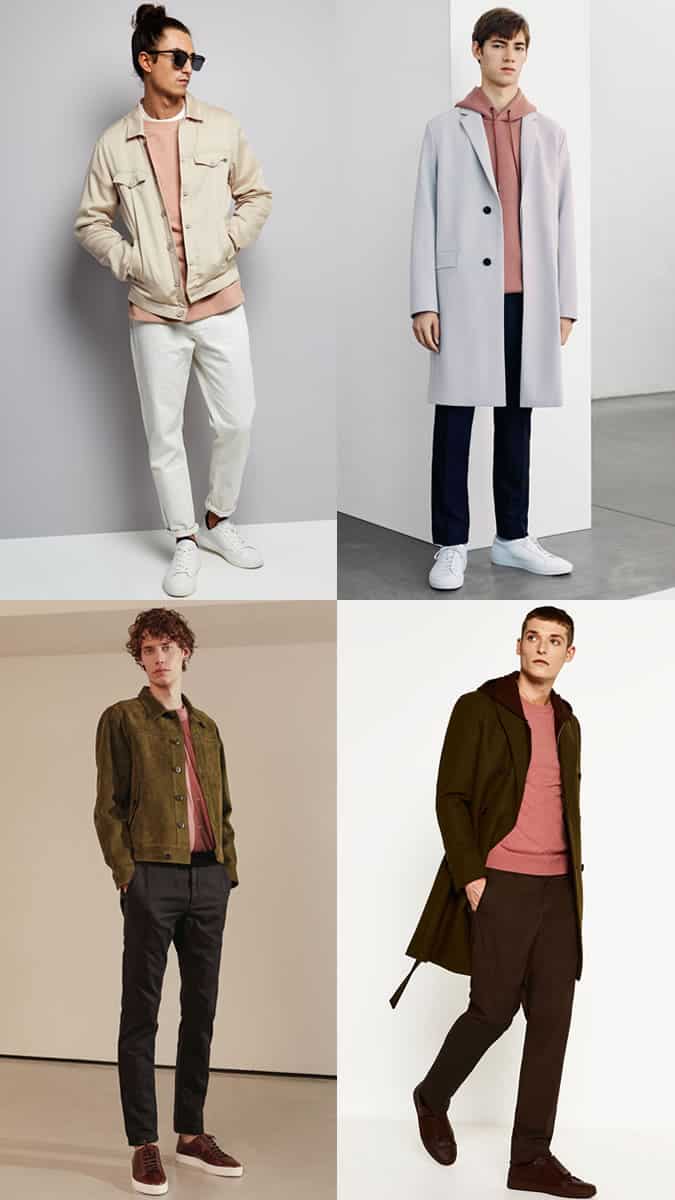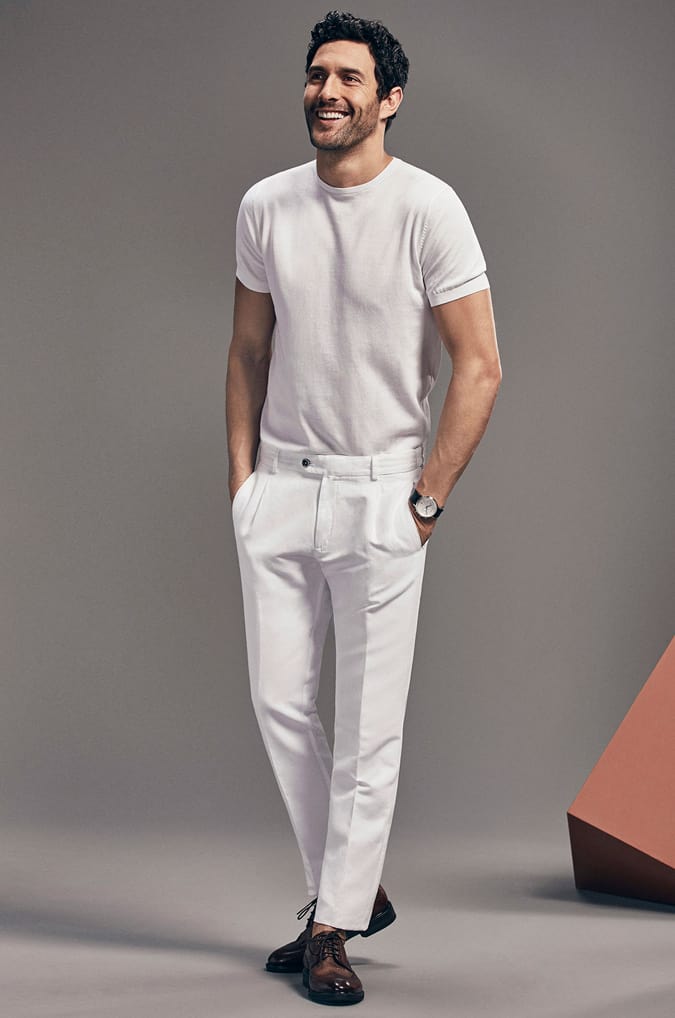
An enlightened man no longer thinks of pink as something that only comes cut with an A-line hem or replete with buttons that fasten the wrong way around. And yet, it’s still a colour that’s criminally underrepresented in most wardrobes.
“The main worry for guys is that they could look effeminate in pink,” says Mr Porter contributing style director Dan May. “But no colour is off limits. It’s just the way you style it and the confidence with which you pull it off.”
The likelihood is that your wardrobe already has a rosy tinge. You’ve probably got a pink shirt, which you may or may not call ‘salmon’ and break out only for weddings. Tucked in a drawer, there’s a pair of pink socks that you got for Christmas and only air on laundry day. Perhaps there’s a cerise-and-black striped tie that you wear, despite not being convinced you like it, because someone once said it suited you.
And that’s a shame. Because deployed properly – rather than as an afterthought – pink is personality. “Wearing pink automatically tells people you’re a confident character,” says Tony Cook, a stylist who has dressed the likes of A$AP Rocky.
Its absence from most outfits means it stands out in yours and, so long as you pick hues that suit your skin tone and that sit pretty with the rest of your outfit, it’s a statement that flatters.
A History Of Men Wearing Pink
Though these days Barbie’s outfits come in pink and Action Man’s don’t (admittedly, pink doesn’t exactly make for great camouflage), it’s a modern gender split, says May. “Until the 20th century, toddlers of either sex were normally dressed in white, but when colours were used, boys were dressed in pink.”
The thinking was that since pink was closer to red and therefore a strong colour, it was inherently more masculine. It wasn’t until some spurious mid-century neurology was misunderstood to mean women preferred redder tints that Barbie began to opt for the hot pink paint job on her convertible, while Action Man donned fatigues.
The notion of men in pink has oscillated in and out of acceptance ever since. In the shape of a pink Oxford shirt, it’s become a preppy staple. For fans of the blazer and pocket square, it’s a summer look seemingly impervious to trends. It has even influenced the football casuals crowd, who would reach for pink polo shirts to stand out on the terraces.
And now, as nostalgia reigns supreme and sportswear-clad subcultures’ styles swing back into fashion, pink is once again a look worth tapping. Here’s how.
The Right Pink For Your Skin Tone
The key to making pink work for you is ensuring it’s the right one. “Picking the wrong shade can wash out your skin tone and work against your complexion,” says Cook.
As with so much in fashion, you need to work in opposites. “For paler skin, a stronger, deeper tone works best. A pale or pastel pink, the kind usually associated with Oxford shirts, complements a post-holiday glow and darker skin.”
But that doesn’t mean men with Ron Weasley’s complexion should reach for fuschia tailoring. “You can’t really wear a great deal of pink if you’re very light-skinned,” says May. “It will wash you out. A lot of sartorial rules can be broken, or at least bent if it’s done in the right way, but that one’s for certain.”
Colours That Work With Pink
Every colour has a Morecambe to its metaphorical Wise. For camel, it’s navy; for green, it’s grey; and for pink it’s no different. While a whole range of hues is up for grabs, rogue tones look best alongside darker blues and browns, but can also pair with white for a striking high-summer statement.
Similar Colours (Easiest To Pair): Reds and mauve pinks.
Contrasting Colours (Harder To Pair): Blue violets and yellow greens.
Complementary Colours (Hardest To Pair): Blue greens.
Recommended: Grey, beige and white, along with darker shades of green and blue.
Contrasting Colours (Harder To Pair): Blue violets and yellow greens.
Complementary Colours (Hardest To Pair): Blue greens.
Recommended: Grey, beige and white, along with darker shades of green and blue.
5 Ways To Wear Pink
Pink As An Accessory
Aside from picking the right shade, wearing pink requires steely self-esteem. If you’re more of a shrinking violet, experiment with smaller, subtle pieces that are worn away from the skin such as a pocket square or a flash of pink sock.

Pink In Winter
Contrary to popular belief, you don’t need to restrict wearing pink to the summer months. In winter, rosy layering pieces offer contrast, peeking out from underneath heavier outerwear, and will inject some colour into wardrobes that have a tendency to steer as sober as the colder seasons’ cloud-bruised skies.

Pink At Work
Despite appearing punchy, pink won’t struggle to slot into what you already wear. In tailoring, it plays especially well with other traditionally masculine colours – there’s a reason the salmon shirt and navy suit has become a modern power dressing staple. Grey also works well in formalwear or, for a more contemporary approach, black and pink together nod to the grunge trend.

















